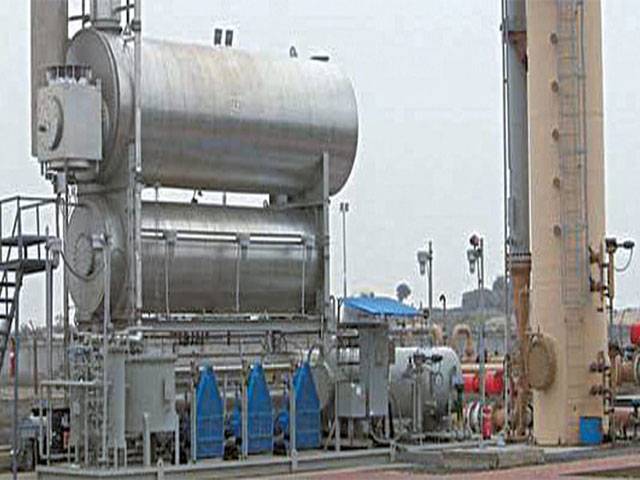LAHORE - The Mari gas field, which runs around 90 percent of the country's fertilizer plants, is going to deplete within 6-8 years.
Engro Fertilizers Senior Vice President Asif Tajik said that the fertilizer industry would have to explore new feed gas options for producing urea, as its import option is very costly.
While talking to media on a visit to the fertilizer plant in Daharki, he said that Mari gas fields which had reserves of over 6 trillion cubic feet of gas, has now come down to 2 trillion cubic feet of gas which may last for another 8 to 10 years. Although gas exploration is an ongoing activity and there are new gas discoveries as well, fertilizer industry feels that department concerned should seriously look for gas exploration and other options for smooth supply of gas to urea manufacturing plants, he added.
Out of country's total annual urea production of 6.2 million tons, the FFC, Fatima Fertilizers and Engro Fertilizers produce approximately 5.2 million tons of urea from the plants which are situated in a radius of about 60km and are dependent on Mari gas field.
Engro Fertilizers Senior Vice President said that Ghotki District is the most revenue generating region of the Sindh after Karachi which houses fertilizer plants that produce 90% of the total national urea production and also produces over 600MW of power through different gas-fired IPPs.
Asif Tajik said that urea fertiliser is so essential for the enhancing productivity of crops that if there were no urea to support the crops, half of the world population may not find enough food.
He said that urea fertilizer is given special importance and priority by the governments across the globe because it helps in ensuring the food security of the nations.
Explaining the reasons of exporting surplus urea last year, Asif Tajik said that fertilizer industry had huge inventory of urea which was difficult to store and handle while there was very little demand in the market at that time. It was a right decision which was taken from the perspective of inventory management given the realities of that time, he added.
He explained that government is now importing one hundred thousand tons of urea because a few plants were earlier shut down due to shortage of gas.
Talking about LNG as an option for urea production, Tajik said that though LNG is an expensive option but it would be a decision of the government if it wants to subsidize the LNG for producing the urea locally or it wants to subsidize the imported urea which is currently available at 280 dollars a ton in the international market. He informed that local urea is available at Rs 1600 per bag while imported urea costs approximately Rs. 2600 per bag for which government have to give a subsidy of approximately Rs. 1000 per bag.
Talking about Engro Fertilizers plants in Dharki, Asif Tajik said that the new plant of Engro Fertilizers, Engro Enven, which is far more efficient than the old plant is running at over 95% capacity. He informed that Engro Enven is producing approximately 1.2 million tons of urea per annum. While the total annual production from its both plants is 2 million tons.
Talking about the CSR initiatives of the company, Asif Tajik informed that Engro is working on a million trees project with forest department and forest dept has allocated 100 acres of land for the project. He informed that Engro is running a snake bite clinic where patients from as far as 300 kilometres comes to get the treatment against snake bites. Tajik said that Engro is running schools, colleges, technical training institutes and also providing livelihood support to several needy families in the nearby communities.






